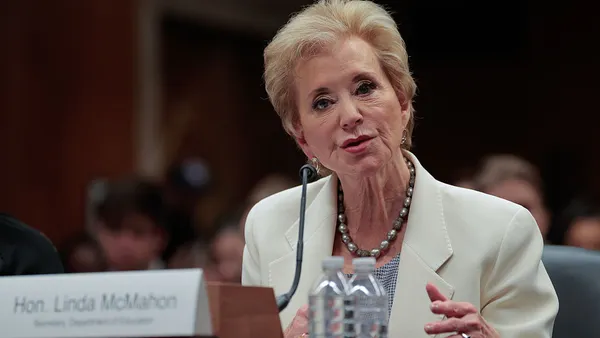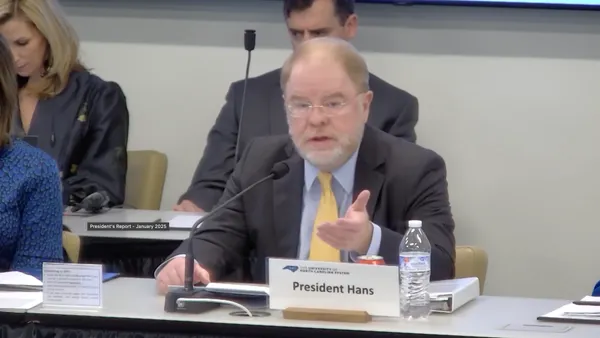Dive Brief:
- The U.S. Department of Education announced Tuesday that it won’t transmit information from students who filled out the Free Application for Federal Student Aid to colleges until the first half of March, further shortening the timeline for institutions to make financial aid offers.
- Usually the Education Department makes the FAFSA available on Oct. 1 and colleges receive applicant data shortly thereafter. This year, the department released the FAFSA form on Dec. 30 — nearly three months later than usual.
- The delay was meant to give the Education Department time to unveil a new, simplified form that reduced the maximum number of questions students and their families must answer from over 100 to less than half of that. But the debut has been hamstrung by delays, technical glitches and last-minute adjustments to the funding formula.
Dive Insight:
The Education Department originally told colleges and state agencies — which rely on FAFSA applicant information to make financial aid and grant offers — that it would transmit data to them in late January. But Tuesday’s announcement pushed back that timeline by over a month.
“On the very day that schools were expecting FAFSA applicant information, they were instead notified by the U.S. Department of Education that they shouldn’t expect to receive that data until March, at the earliest,” Justin Draeger, president and CEO of the National Association of Student Financial Aid Administrators, said in a statement. “These continued delays, communicated at the last minute, threaten to harm the very students and families that federal student aid is intended to help.”
At the same time, the department announced that it has updated key tables it uses to calculate how much federal aid students can receive to account for inflation. The agency estimated that the change will result in students receiving about $1.8 billion more in federal aid.
The move, which the department confirmed to Higher Ed Dive last week, is a reversal from the department’s earlier position. Late last year, the agency told The Washington Post that it wouldn’t have time to update the tables before it rolled out the new FAFSA.
When the Education Department initially announced plans to update the income tables, higher education experts worried how the change would impact the financial aid processing cycle. This latest delay proves those fears were well-founded.
“With this last-minute news, our nation’s colleges are once again left scrambling as they determine how best to work within these new timelines to issue aid offers as soon as possible — so the students who can least afford higher education aren’t the ones who ultimately pay the price for these missteps,” Draeger said.
Draeger also pointed out that wide contingents of students haven’t been able to fill out the FAFSA online as the department continues to work through issues with the new form. So far, 3.1 million FAFSA forms have been submitted for the 2024-25 award year, the department said Tuesday.












